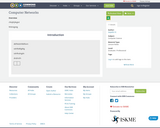
cfkdjkfjdkgkdfkfdnkgkdg
- Subject:
- Computer Science
- Material Type:
- Lecture Notes
- Author:
- Gayathri D
- Date Added:
- 06/30/2020

cfkdjkfjdkgkdfkfdnkgkdg
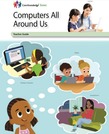
In this 8 lesson, Grade K unit from Core Knowledge, the goal of the instruction is that young students build a concept of what makes something a computer and how we use computer devices in our daily lives. The key question guiding the unit is: What are computers and where can we find them?
Download the Teacher Guide that contains comprehensive lessons and lesson plans and an overview of the entire unit of study and the Student Book designed as a Read-Aloud.
.

Syllabus for CSCI 49378: Introduction to Distributed Systems and Cloud Computing

Swarms of tiny robots have given up their selfish ways and started sharing resources for the greater good. Though this might sound like the plot of a bad summer blockbuster, it is real news. This month, a team of Swiss researchers announced that they've used robots to simulate biological evolution. The simple, mobile robots - each a little larger than a sugar cube - began their lives directionless, meandering aimlessly into walls. But after a few generations of natural selection, their computer programs evolved so that they became efficient foragers, purposefully collecting disks that represent food. None of that is particularly surprising. Scientists have long been able to simulate evolution through computer programs that mimic the processes of genetic inheritance, mutation, recombination, and reproduction. What is noteworthy is that many of these robots eventually evolved to help one another, sacrificing personal success to aid other robots in their group.

This course is offered to undergraduates and addresses several algorithmic challenges in computational biology. The principles of algorithmic design for biological datasets are studied and existing algorithms analyzed for application to real datasets. Topics covered include: biological sequence analysis, gene identification, regulatory motif discovery, genome assembly, genome duplication and rearrangements, evolutionary theory, clustering algorithms, and scale-free networks.
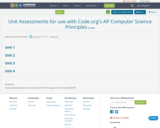
Summative Assesments for use with Units 1 through 4 of Code.org's AP CSP.
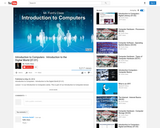
Our first lesson in our FREE Introduction to Computers/ Business Computers Information Systems (BCIS) course.
This video will introduce new students to this series and what they can expect.
Our first lesson in our FREE Introduction to Computers/ Business Computers Information Systems (BCIS) course.
This video will introduce new students to this series and what they can expect.
Our first lesson in our FREE Introduction to Computers/ Business Computers Information Systems (BCIS) course.
This video will introduce new students to this series and what they can expect.
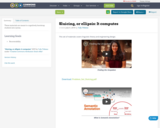
These materials are meant to cognitively bootstrap students into syntax.

Here's a fun introduction to computer science! This video will show you how to use jewelry-making to learn about binary coding.
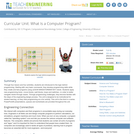
Through four lesson and four activities, students are introduced to the logic behind programming. Starting with very basic commands, they develop programming skills while they create and test programs using LEGO MINDSTORMS(TM) NXT robots. Students apply new programming tools move blocks, wait blocks, loops and switches in order to better navigate robots through mazes. Through programming challenges, they become familiar with the steps of the engineering design process. The unit is designed to be motivational for student learning, so they view programming as a fun activity. This unit is the third in a series. PowerPoint® presentations, quizzes and worksheets are provided throughout the unit.
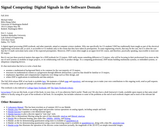
A digital signal processing (DSP) textbook, and other materials, aimed at computer science students. Why one specifically for CS students? DSP has traditionally been taught as part of the electrical engineering curriculum and, as such, is accessible to CS students only to the extent that they have taken its prerequisites. In some engineering schools, that may be the case, but it is often the case that the CS math curriculum lacks some of the expected prerequisites. Moreover, DSP is most often taught as an upper-level EE course, and therefore, practically speaking, inaccessible to most non-EE majors.

This activity is utilized as a method for students to commuincate their current learning, progress their understanding, and then reflect on their current understanding of a topic and share what they now think and the connections they have built.
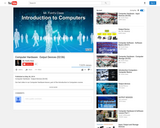
Our last video in our Computer Hardware lesson, part of the Introduction to Computers course.
This video looks at the most common output devices found on a computer we also list out top 5 resources, be sure to check them out.
http://arstechnica.com/
http://www.cnet.com/
http://www.newegg.com/
http://www.tigerdirect.com/
http://www.tomshardware.com/

Why has it been easier to develop a vaccine to eliminate polio than to control influenza or AIDS? Has there been natural selection for a ’language gene’? Why are there no animals with wheels? When does ‘maximizing fitness’ lead to evolutionary extinction? How are sex and parasites related? Why don’t snakes eat grass? Why don’t we have eyes in the back of our heads? How does modern genomics illustrate and challenge the field?
This course analyzes evolution from a computational, modeling, and engineering perspective. The course has extensive hands-on laboratory exercises in model-building and analyzing evolutionary data.
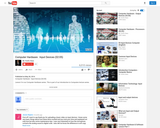
Video 5 in our introduction to computers series looks at computer input devices. We examine some common input devices and look at how to clean your keyboard and mouse.

This course instructs students on how to develop technologies that help people measure and communicate emotion, that respectfully read and that intelligently respond to emotion, and have internal mechanisms inspired by the useful roles emotions play.

This course introduces students to the fundamental concepts of physical computing systems through hands-on, real-life applications. Physical computing forms the basis of smart devices, wearables like smart watches, e-textiles / fashion, IoT (Internet of Things) devices, and hardware start-up
This course teaches students to design electronic devices that interact with the physical world by building circuits and developing software algorithms that run on a microcontroller. These devices will also be connected to the internet so they can send sensor data to dashboards and be remotely operated from a computer or mobile device.
This course is designed specifically for university undergraduate students from all majors. It presumes no in-depth knowledge of physics or math nor prior experience with electronics. The only expected prerequisite knowledge is introductory experience with procedural programming (i.e. variables, functions, loops).

This book is an introduction to the computational methods used in physics, but also in other scientific fields. It is addressed to an audience that has already been exposed to the introductory level of college physics, usually taught during the first two years of an undergraduate program in science and engineering. It assumes no prior knowledge of numerical analysis, programming or computers and teaches whatever is necessary for the solution of the problems addressed in the text. It can be used as a textbook in introductory computational physics or scientific computing classes. The book starts with very simple problems in particle motion and ends with an in-depth discussion of advanced techniques used in Monte Carlo simulations in statistical mechanics. The level of instruction rises slowly, while discussing problems like the diffusion equation, electrostatics on the plane, quantum mechanics and random walks. All the material can be taught in two semesters, but a selection of topics can form the material of a one semester course. The book aims to provide the students with the background and the experience needed in order to advance to high performance computing projects in science and engineering. It puts emphasis on hands--on programming of numerical code but also on the production, analysis and interpretation of data. But it also tries to keep the students motivated by considering interesting applications in physics, like chaos, quantum mechanics, special relativity and the physics of phase transitions. There is a C++ and a Fortran edition for the core programming. Data analysis is performed using the powerful tools of the GNU/Linux environment. All the necessary software is open source and freely available. The book and the accompanying software are given under a Creative Commons License/GNU public License as a service to the community. It can be used freely as a whole, or any part of it, in any form, by anyone. There is no official distribution of hard copies, but you can use the printing service of your preference in order produce any number of copies you need for you and/or your students. For the lazy ones, a very nice and cheap paperback can be purchaced from lulu.com, amazon.com and conventional bookstores. The ebook can be read in most electronic devices like your PC, tablet or favorite ebook reader and it is freely available from the book's website.
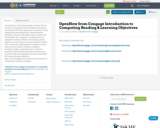
Introduction to Computing provides students with an overview of computers and networking technology in use today, and how they impact parts of modern society ranging from personal privacy to global business operations. Learners will explore topics related to the development, use, regulation, and implications of computer hardware, software, networking, and the Internet in social, business, and government contexts. This coursework is appropriate for computer science majors and non-majors seeking to establish a foundation in basic computing topics. Content is available in PDF and Open Document formats and is licensed CC BY. Learning Objectives also are provided.
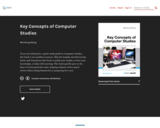
Short Description:
If you are looking for a quick study guide in Computer Studies, this book is an excellent resource. Skip the lengthy and distracting books and instead use this book to guide your studies, review your knowledge, or help with tutoring. This book quickly gets to the heart of each particular topic, helping students with a quick review before doing homework or preparing for a test.
Long Description:
If you are looking for a quick study guide in Computer Studies, this book is an excellent resource. Skip the lengthy and distracting books and instead use this book to guide your studies, review your knowledge, or help with tutoring. This book quickly gets to the heart of each particular topic, helping students with a quick review before doing homework or preparing for a test.
Word Count: 22107
ISBN: 978-1-77420-085-8
(Note: This resource's metadata has been created automatically by reformatting and/or combining the information that the author initially provided as part of a bulk import process.)